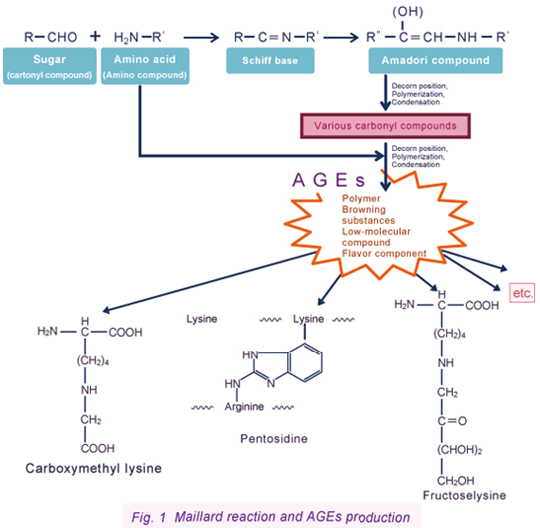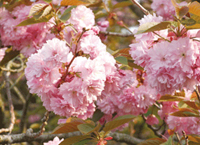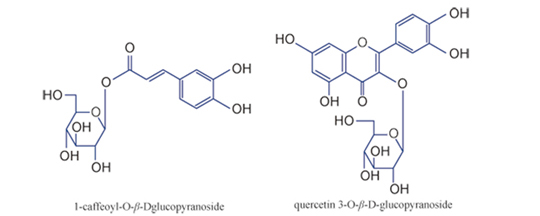Glycation – an important factor for skin pigmentation, dark skin tone
Glycation is also called Maillard reaction
The Maillard reaction is a chemical reaction between carbohydrates and proteins and results in brown end-products, melanoidins. These end-products are important in food industry for flavoring and coloring purposes. The Maillard reaction also occurs in the human body. It is a step in the formation of advanced glycation end-products (AGEs).ts)
The influence of AGEs (Advanced Glycation End Products):
1. Glycation of collagen and elastin
As age increases, AGEs accumulate in human skin and lead to the damage to skin cells and aging. AGEs damage elastin and collagen and cause the loss of skin elasticity. AGEs also coaggregate with collagen (glycation of collagen and elastin) that will result to secretion of collagen-breakdown enzymes to digest collagen, ultimately leads to the apoptosis of fibroblast. AGEs will turn human skin into saggy, wrinkled, dull, pigmentation and speckled skin tone.
2. Diabetes and aging
Report of AGEs in diabetes and metabolic diseases:The content of carboxymethyllysine(CML) and pentsidine (AGEs) in skin were analyzed. There were strong correlation between AGEs and ages of subjects of both groups, indicating age-related chemical modification of collagen by Maillard reaction and the process is accelerated in diabetes.
Sakura extract: inhibition of AGEs
Sakura (cherry blossom) is the flower of genus Prunus. ORYZA and Kyoto Pharmaceutical University discovered the physiological functions of sakura extract and applied sakura extract to health food for beauty and cosmetics. Food-grade of Yaezakura (multi-layered cherry blossom) was cultivated in Japan and was harvested raw materials for extraction.
Functional ingredients:
1. SAKURA EXTRACT: inhibition of AGEs production
【Experiment I】
Bioactive components of SAKURA EXTRACT and SAKURA EXTRACT were added to buffer solution containing D-glucose and bovine serum albumin at 60°C and left to stand for 2 days. The AGEs levels were measured via photometer.
【Result】
(1) SAKURA EXTRACT and the major bioactive components significantly inhibited the production of AGEs in a dose-dependent manner.
| Inhibition of AGEs production ratio (%) | IC50 | ||||
| 10 (μg/mL) | 30(μg/mL) | 100(μg/mL) | 300(μg/mL) | (μg/m) | |
| SAKURA EXTRACT | -10.8±0.4 | -9.9±0.6 | 15.1±0.7** | 42.6±3.2** | >300 |
| 1-caffeoyl-O-β-D-glucopyranoside | 10.7±0.1** | 19.5±0.3** | 25.0±0.3** | 30.0±0.4** | >300 |
| quercetin 3-O-β-D-glucopyranoside | 27.6±0.5** | 49.8±0.7** | 74.2±1.1** | 100.8±0.6** | 30 |
◎Each value was shown in the mean and standard error of three cases. With asterisks were significantly different from untreated samples by Dunnett’s multiple comparison test. *: p <0.05, **: p <0.01
(2)SAKURA EXTRACT (100µg/mL) significantly inhibited the production of AGEs. Meanwhile, the major bioactive components, 1-caffeoyl-O-β-D-glucopyranoside and quercetin 3-O-β-D-glucopyranoside significantly inhibited the production of AGEs at concentration as low as 10µg/mL.

(3)SAKURA EXTRACT showed strong inhibitory potency in AGEs production. 1-caffeoyl-O-β-D-glucopyranoside and quercetin 3-O-β-D-glucopyranoside contribute 93.3% in the inhibition of AGEs production
| Inhibition of AGEs production ratio (%) | IC50 | Purity(%) | Contribution(%) | ||
| 10 (μg/mL) | 30(μg/mL) | (μg/m) | |||
| SAKURA EXTRACT | -10.8±0.4 | 15.1±0.7** | >300 | 100.0 | 100 |
| 1-caffeoyl-O-β-D-glucopyranoside | 10.7±0.1** | 25.0±0.3** | >300 | 10.2 | 72.3 |
| quercetin 3-O-β-D-glucopyranoside | 27.6±0.5** | 74.2±1.1** | 30 | 1.15 | 21.0 |
◎Each value was shown in the mean and standard error of three cases. With asterisks were significantly different from untreated samples by Dunnett’s multiple comparison test. *: p <0.05, **: p <0.01





